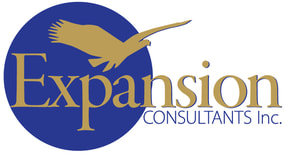
doi: 10.1177/1545968313516870
Schaadt AK, Schmidt L, Reinhart S, Adams M, et al.
Review by
Jeremy Hauptman (Class of 2017)
Midwestern University, Arizona College of Optometry
The quality of life of patients who have suffered from traumatic brain injury (TBI) and stroke resulting in brain lesions, can significantly impact a person’s daily visual, mobile, cognitive, and social functions. In examining the visual consequences of these brain lesions, patients commonly complain of blurred vision, diplopia, and reduced binocular depth perception. This study evaluates the treatment options to improve convergent fusional amplitude and stereoacuity in patients who have suffered from a stroke or TBI. Although studies on this patient population are minimal, there have been effective studies shown in the treatment of amblyopia and other neurological issues. Through effective rehabilitation strategies, these treatment options are aimed at improving the convergent fusional amplitude and stereoacuity in and relieving signs and symptoms.
Perceiving the world as we do requires both a cognitive sensory and motor component that actively keeps two images as single. The sensory component ensures the merging of disparate monocular images to be fused stereoscopic representations. This process occurs in the visual cortex with contour-based stereocues being processed by V1 and refined analysis of disparity information by the extrastriate areas (V2-V8). The role of the motor component is to align the eyes appropriately through the vergence (convergence/divergence) system to keep an image single. The motor component occurs in the midbrain oculomotor areas and frontal eye fields. A disruption in these areas secondary to strokes and TBI’s can help explain the signs and symptoms patients’ experiences.
Twenty patients (11 patients with unilateral or bilateral brain damage resulting from stroke/ 9 patients with traumatic brain injuries) with significant problems with binocular vision were recruited from the Neuropsychological Outpatient Department of Saarland University. Patients with permanent diplopia or blurred vision and those with diseases of the anterior visual pathway were excluded.
All patients underwent baseline ability testing for fusional convergence, stereoacuity, near/far visual acuity, accommodation, and subjective binocular reading time until diplopia emerged at 6 different time points. Each patient underwent 3 baseline sessions (pre-therapy, a post-therapy assessment after 6 weeks of treatment, and a 3 and 6 month follow up). After the third baseline session (pre-therapy), patients completed fusion/stereotraining for 60 minutes twice per week (average sessions completed: 13.92) within a 4 to 8 week period. Patients received a novel fusion and dichoptic training using the following 3 different devices to slowly increase fusional and disparity angle:
- Prism to practice horizontal convergent fusion. Amplitudes were increased when patient achieved fusion for greater than 2 minutes without diplopia.
- Dichoptic device to displace 2 different images to each eye with increasing horizontal disparity.
- Cheiroscope to laterally separate the image of left eye by mirror and see if the patient had ability to retrace picture on a blank sheet that was seen by the right eye.
Analyzing the groups of patients (TBI and stroke), both groups improved in all these variables as well as a slight increase near visual acuity. No significant changes were observed during the pre-therapy and follow-up periods, ruling out spontaneous recovery and demonstrating long-term stability of binocular treatment effects. The stroke patients showed higher training benefit than TBI in convergent motor fusion. This difference in outcome may be attributed to the differences in the damage mechanism with stroke versus TBI. TBI is a more extensive shearing injury versus an isolated cortical area injury. The shearing injury may involve more extensive damage to the brainstem, part of brain that is critical in motor fusion. The TBI showed higher training benefit than strokes in subjective reading duration. Exploring the differences in outcomes of the two groups in subjective reading duration, epidemiologically between the two groups may play a factor; stroke patients are appropriately 20 years older than the TBI patients. This suggests that changes in cognitive and sensory abilities may also play factor. Lesion chronicity was not significantly correlated with average improvement of motor fusion, stereoacuity, or subjective reading duration in either sample
In conclusion, this study indicates under the ideal treatment conditions, one’s brain has the plasticity to relearn binocular fusion and stereovision. Exploring treatment options such as the ones used in this study can help provide leading edge rehabilitation strategies to treat binocular vision deficits resulting from permanent visual cortical damage.

 RSS Feed
RSS Feed

